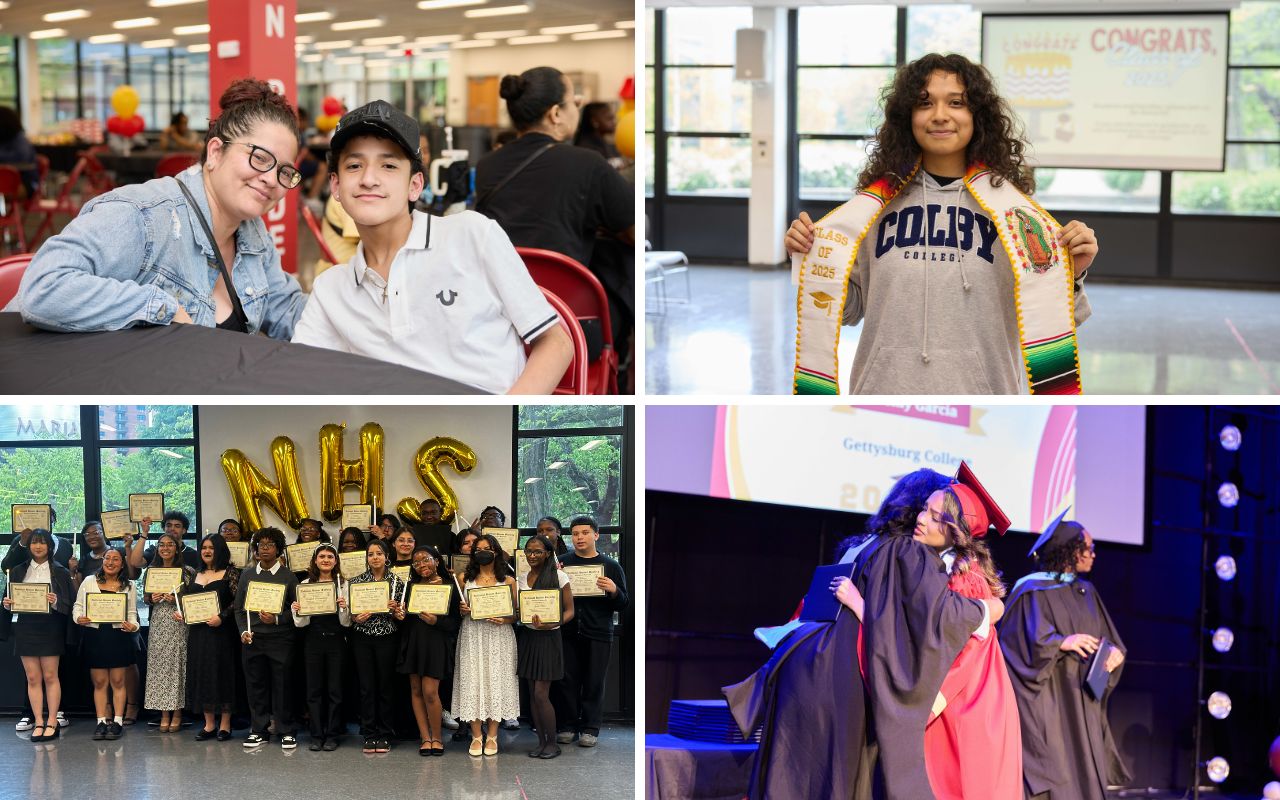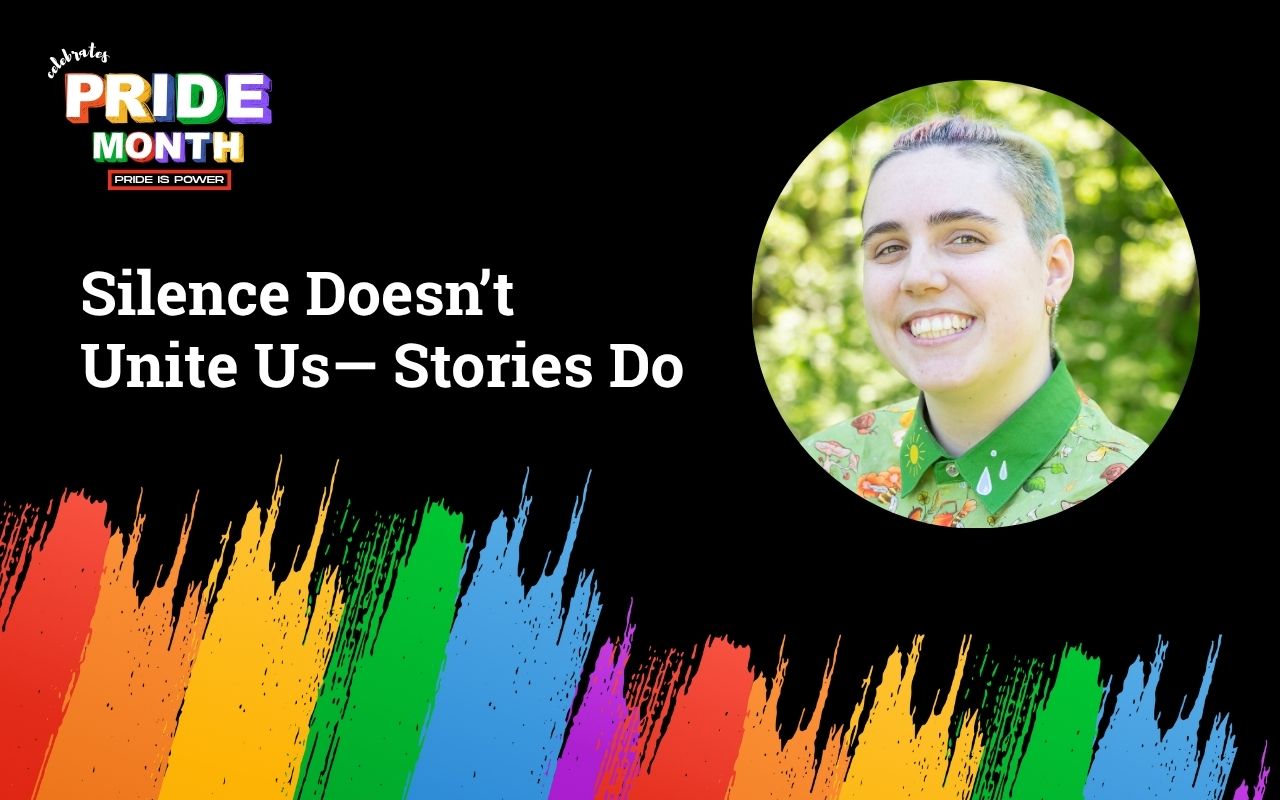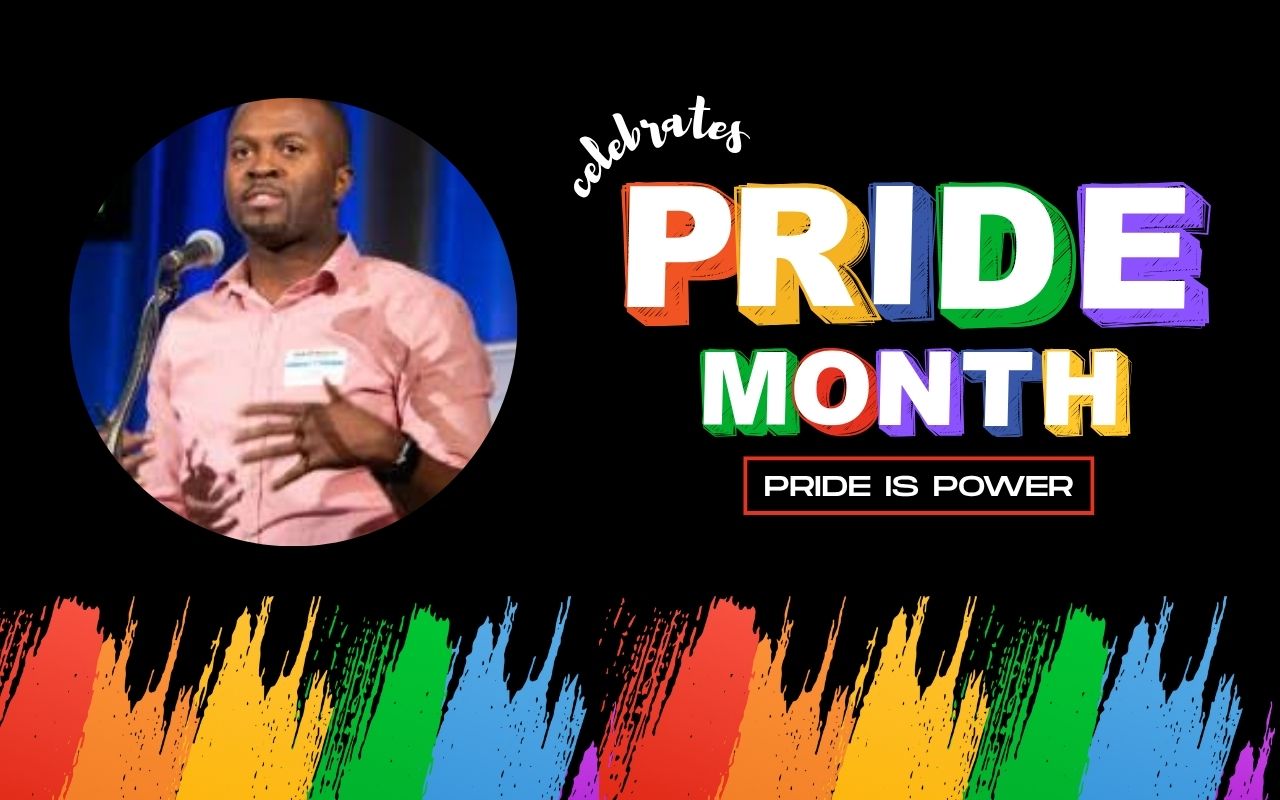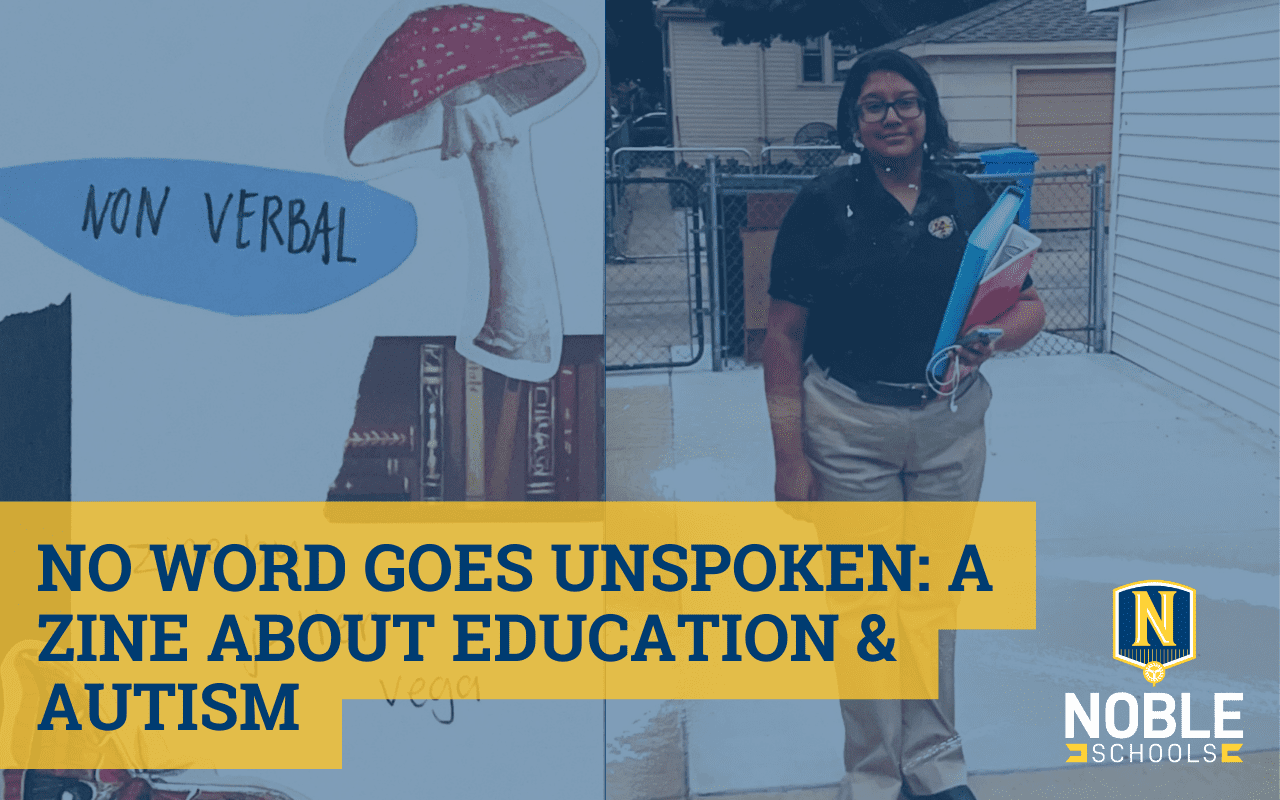
BY JULIEN VEGA | they/them | Chicago Bulls alum & Noble Communications intern
In school, I struggled with speaking and making friends. I didn’t know when it was the right time to speak so I would stay quiet until I was called on. I stayed quiet during advisory, gym, English, and lunch. Even on the bus and train ride home, I stayed silent. The same applied to making friends – I gained friends only when other people spoke to me and I was interested in their conversation. For the longest time, I assumed I had intense social anxiety… until I learned that I had Autism.
During the COVID-19 pandemic, I started learning about the diverse Autistic spectrum and how it looks different for every Autistic. It was then that I learned the terms non-verbal and semi-verbal. Non-verbal is when an Autistic person doesn’t use speech to communicate but may use other forms of communication such as cue cards or communication speaking devices. Semi-verbal is when an Autistic person may speak but, oftentimes, will communicate using other tools. I quickly found myself identifying with these terms because of how I struggled with spoken communication. With this knowledge, I began to find ways to advocate for myself as an Autistic adult. For example, I tend to get nervous when presenting in meetings so I turn my camera off to decrease my anxiety.
As Autism Acceptance Month was approaching last month, I began to revisit my education history with this new lens. A part of me was still suffering from the pain I held all those years. Another part of me was ready to let that all go and begin fresh. I created a zine to release that pain and showcase my non-verbal experience in school. I used it to talk about the comments I received from teachers, students, family members, and others that contributed to my anxiety. Ultimately, I made this zine to heal from those years and start a new beginning for myself.

IMG_3182
Cover of Non-Verbal Zine
Cover: One of the first signs of Autism that I noticed was my special interests. Special interests are topics (TV shows, movies, comics, objects, etc) that an Autistic person enjoys intensely and it becomes a part of their identity. One of my special interests is Mothman. I’ve always been a fan of cryptids, paranormal, and urban legends. Mothman became one of my favorites and has been the inspiration for a lot of my creative work. My interest in the cryptid led me to become fascinated by moths. Their beautiful yet unique patterns captivated me. I began to relate to the quiet, picturesque insects because they’re so much more than a bug to me – they’re a reminder of how beautiful silence can be.
As for the mushrooms, I do like them in my soup, but I love mushrooms mostly because of how they communicate. Mushrooms are able to communicate with each other without saying a word via electrical signals they send across their filaments underneath the soil. As a non-verbal person, I didn’t feel so alone in my experience knowing that there are plenty of other species who don’t talk to communicate. This scientific fact made me recognize that I can still communicate without speaking.

IMG_2973
Pages 1 and 2 of the zine
Page 1: Growing up, everyone told me I was an easy child to care for. I didn’t bother anyone with yelling or crying, and I managed to care for myself without assistance. To everyone, I was a mature child and was applauded for being the star child. However, I still was non-verbal to those around me. I didn’t bother anyone because I was afraid to speak up. I learned to care for myself because I didn’t know how to ask for help when my speech was limited. In turn, my mind believed that if I asked for help, I wouldn’t be the mature child my family cheered for. As a kid, it felt empowering to be considered mature but, as time went on, it no longer felt empowering. I started to feel more alone. I had no one to talk to about my interests, and I slowly found comfort in loneliness.
Page 2: Once I entered elementary school, I was doing well. I adapted quickly to my studies and received good grades in return. But, in hindsight, I didn’t enjoy school. I was struggling to adapt outside the classroom, like during independent time or playtime. I was afraid to talk to new people and found myself reading books rather than playing. I struggled to speak up for myself and so I would find myself in situations that made me uncomfortable. For example, in this photo I used, I was posing next to my parents and looked visibly uneasy. I grew up disliking physical contact and did not enjoy hugs. As an Autistic adult, I learned that it was because I was struggling with sensory issues, and hugs made me feel overstimulated and distressed. Looking back at this photo now makes me wish I could have found a way to communicate my discomfort with my parents rather than watering down my emotions to please others.
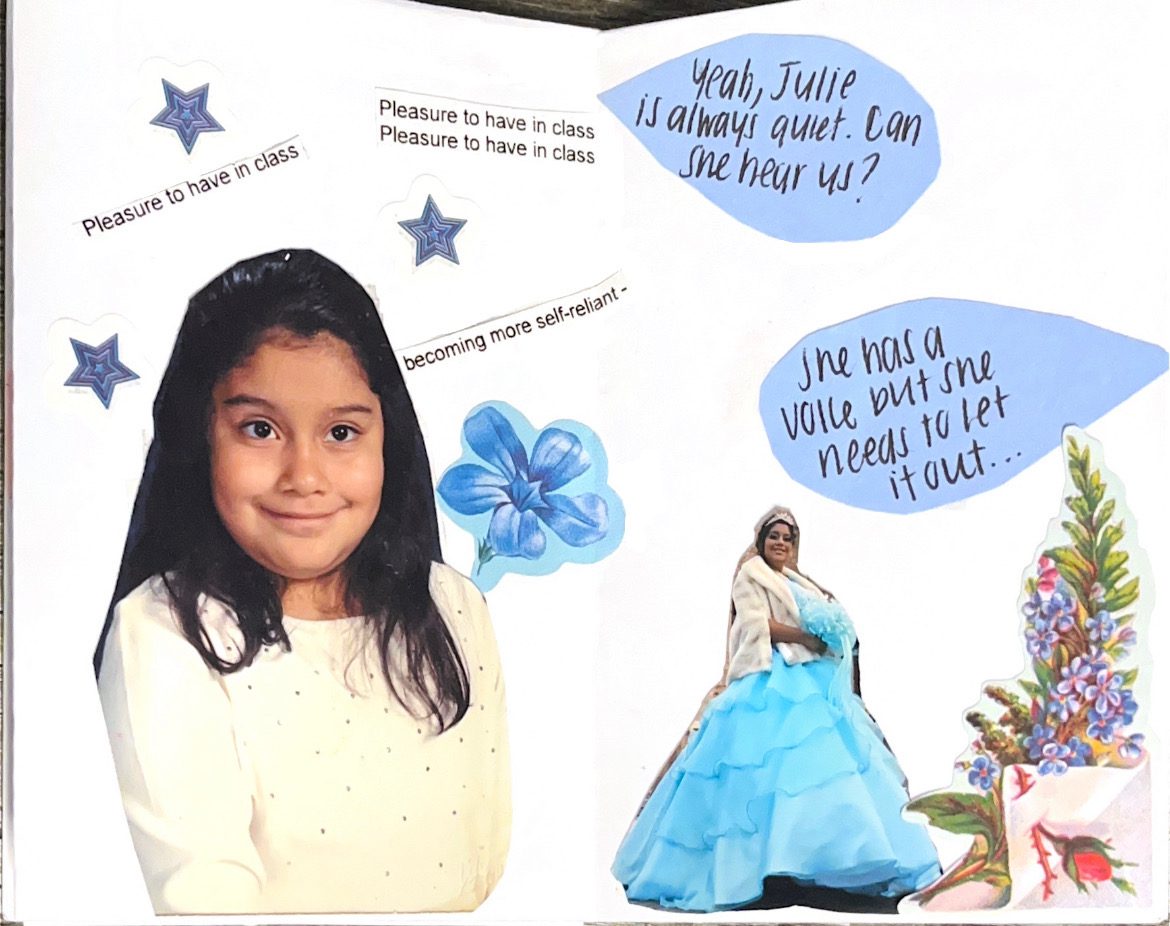
66F44529-DE43-4022-8F52-759EE637B3C6
Pages 3 & 4 of the zine.
Page 3: As I continued in elementary school, I received the message that every quiet child got: Pleasure to have in class. At times, it felt nice to be considered a great student. Other times, it was a reminder that there wasn’t much to say about me. I didn’t get into trouble or make teachers worry. I was the “almost perfect student”, as my fourth-grade teacher would say. I had all the right tools, but I still couldn’t speak in class. I was a fast-paced reader, I aced tests left and right, I was an honor student — but I still couldn’t speak when the teacher called on me.The shame that made me feel continued all the way through high school.
Page 4: When I entered high school, I was scared and worried about fitting into a new environment. I kept to myself and did my best to focus on my studies. However, I began to struggle heavily with anxiety in gym because fitness was a vulnerable activity for me to do. I felt scared of how others would view me and constantly worried about my weight, especially with the school’s focus on fitness. In order to pass onto the next grade, I had to pass three fitness tests which included a mile run. Oftentimes, gym teachers would push me and yell “encouraging” messages. In hindsight, these messages didn’t translate in my mind. The messages didn’t feel sincere. Rather, it felt discomforting to hear them yell “Julie, you need to pick up the pace” or “Stop breathing so heavily and start the next lap.” I wished I had spoken up then as my sister has dealt with similar messages even three years after I graduated.
The photo I used on this page was during my quinceanera – a time I felt so beautiful in my skin. However, I still received remarks on my speaking skills during my party. I was asked to speak in front of my family during a church moment and I stuttered some words. I heard comments such as “Julie needs to practice more. Her words are all over the place,” and “This is her day. She needs to put in more effort.” At a celebration of me, an event that was considered the transition from girlhood to womanhood in my culture, all I learned was that I’d be nothing if I didn’t speak. Every time I look back at photos of that day, I can feel myself shrinking from the sting of all those comments.
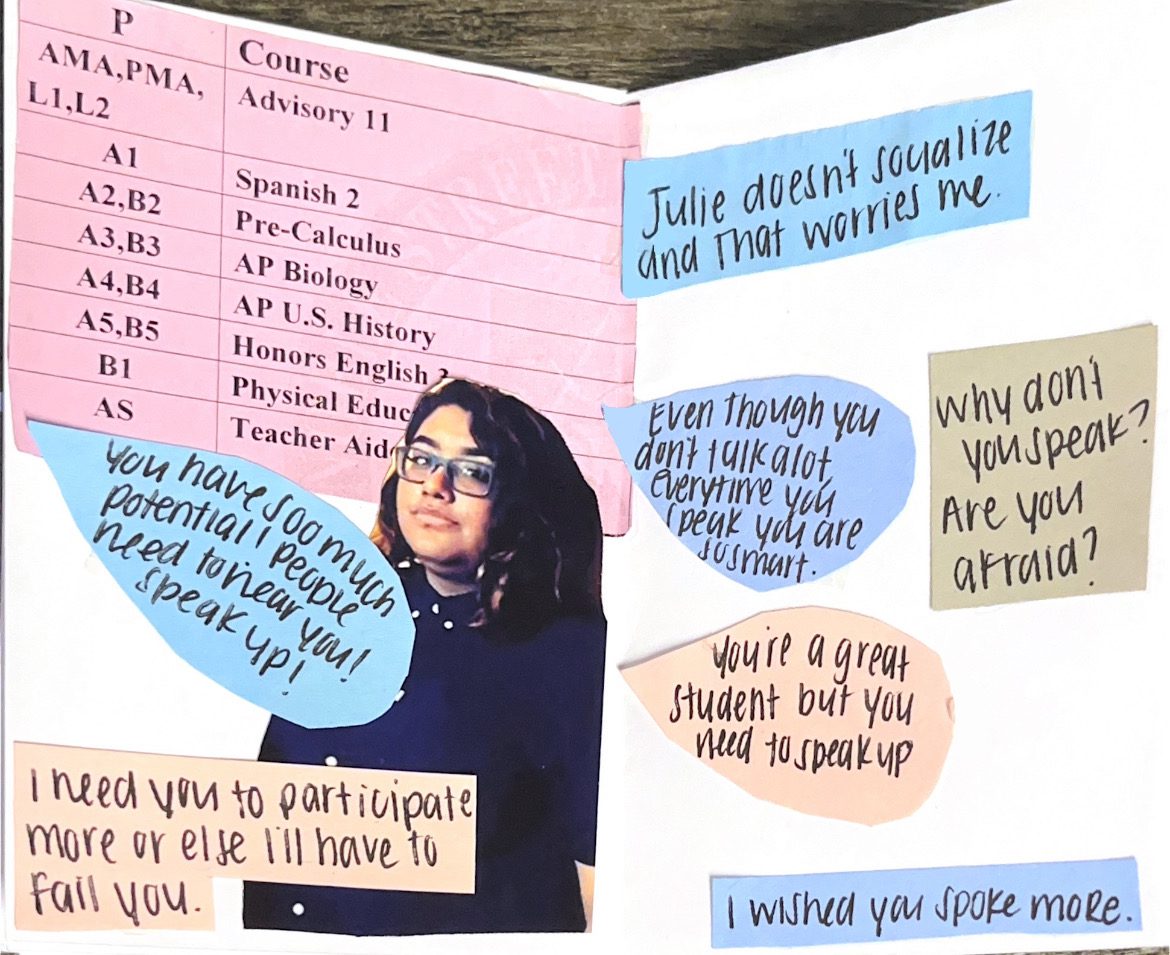
58B97E98-C1B8-40BE-AEE7-4F3092CFAC29
Pages 5 & 6 of the zine.
Page 5 & 6: Once the end of junior year hit, I began to recognize how alienated I felt in school. I knew all of the assumptions my peers made about me at school – one of them being I had no friends. When I was heading home on the train one day, I bumped into my now (but not at the time) boyfriend. We chatted the whole way home and then went about the day. The next day, a classmate came up to me and asked who I was talking to on the train ride. When I told her about my friend, she responded with: “Oh, I didn’t know you had friends.” A part of me hoped she meant I didn’t have friends in this school and not in general. Deep down, I knew what she meant. In the end, I couldn’t defend myself because I didn’t have the words.
I was tired of being misunderstood. I was exhausted of people speaking over me and for me. So, I pushed myself to raise my hand in class and add my two cents during discussions. At the time, I thought I was just gaining confidence, but in retrospect, I was just masking the pain of forcing words through my mouth so others would respect me. I didn’t know what masking was until later on but it became a safety net for me. Masking is a term to describe when an Autistic person hides their Autistic traits that may come off as weird in order to fit in with non-Autistic people. I started to talk more in class and chat with classmates that normally wouldn’t talk to me.
I began to notice a difference with my classmates and teachers. Students weren’t making comments to me like “Can she hear us?” or “Don’t worry about her, she won’t say anything.” anymore. Some would even ask me for help in class, which was new. Teachers were no longer cold-calling me, but rather telling the class, “Anyone else but Julie would like to say anything?” Before I spoke up in class, I remember students saying they were surprised by my intelligence and interests. Now, I had people talk to me on the bus or in class. However, I still struggled with others who I didn’t have in class. People would still equate my overall intelligence to my speaking ability. This left me feeling alone once again.
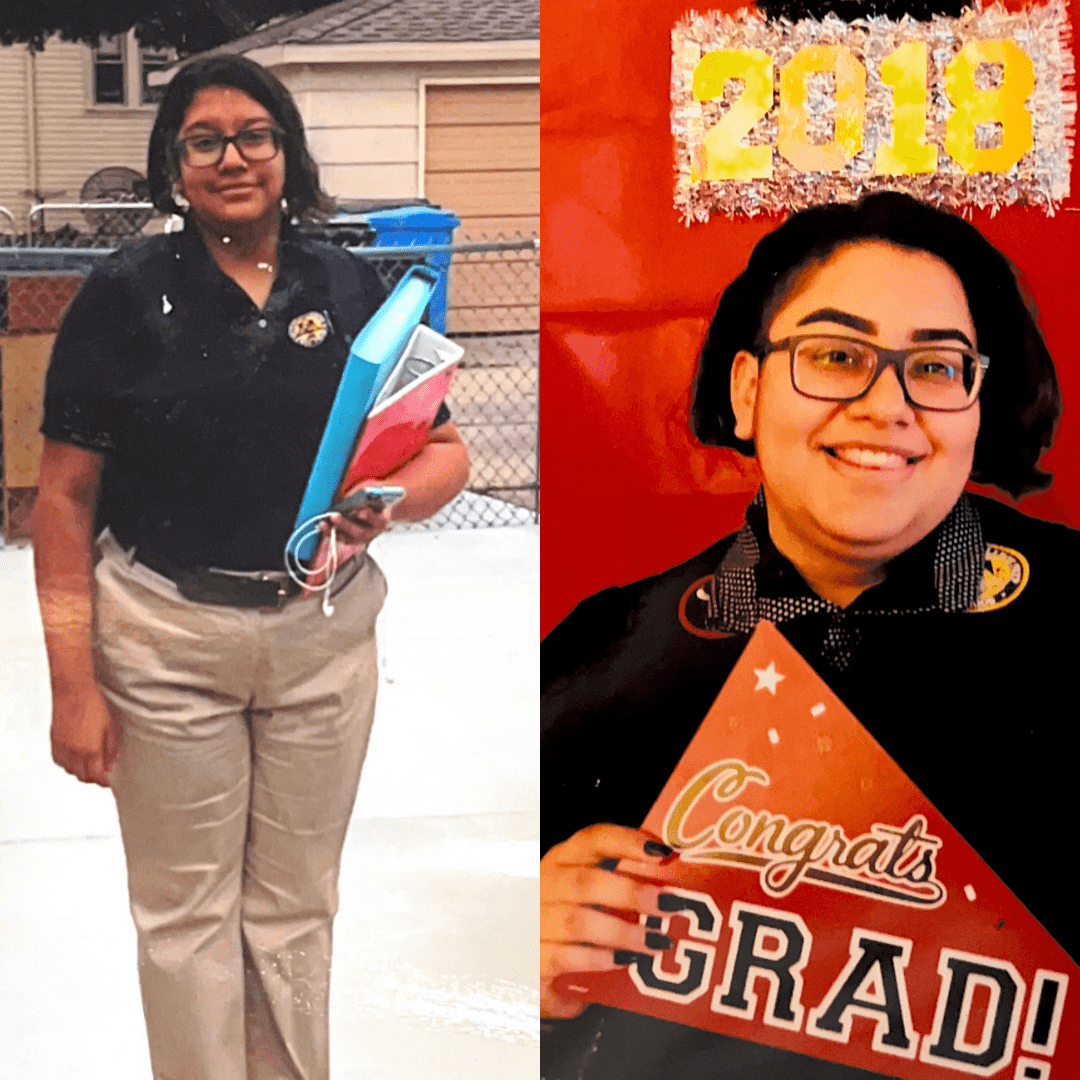
Zine Collage
First day of High School and Graduation day for Julien
Every moment where I struggled to speak up always stayed in my mind. I rewind the memories and tell myself “If you would have said something, x, y, or z wouldn’t have happened.” Sometimes it’s true, sometimes it’s not. But, I didn’t have the resources that I have now back then. I know I would’ve benefited from having cue cards or speaking to a teacher I trusted, but I didn’t know I was Autistic, and I didn’t have a way to voice my needs and worries. Now, looking back at my experience, I hope to provide support and advice to those who may be in the same situation.
If I could tell my younger self one thing… it’d be to write. At first, I struggled to write my own thoughts. Now as a journalist and social media techy, I find myself writing all my emotions and thoughts to process them easier. Beforehand, I would hold onto all the comments and let them sting. Through writing, I began to find ways to communicate my emotions. I started to journal during the day and before bed, giving myself a clear mind before sleeping.
I can now speak without even opening my mouth. Just as mushrooms communicate under the soil, I found my own way to communicate without having to dig up my roots.

